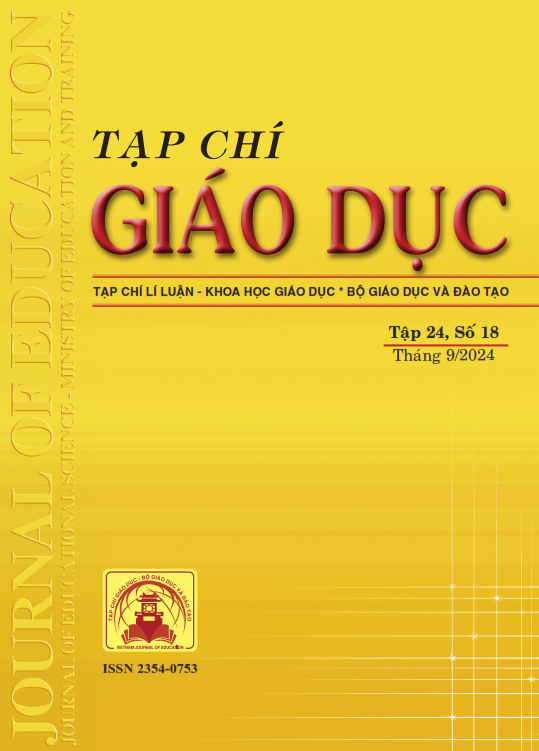Thiết kế và tổ chức hoạt động giáo dục STEM trong dạy học chủ đề “Nấm” (Khoa học 4)
Tóm tắt
In the 2018 General Education curriculum, Science is a compulsory subject. To enhance the quality of teaching Science in general, and the topic “Fungi” in 4th-grade Science in particular, various instructional methods can be employed, including project-based learning, experiential learning, and integrated STEM (Science, Technology, Engineering, and Mathematics) teaching. Organizing STEM activities helps students apply their knowledge to real-life situations, fostering the development of their character and competencies. The research proposes a process for designing and organizing STEM educational activities in teaching the “Fungi” topic (Science 4), accompanied by illustrative examples. The research contributes to improving the quality of teaching and learning in the Science subject, while also supporting teachers in effectively applying the STEM approach in practical teaching at the primary school level.
Tài liệu tham khảo
Becker, K. H., & Park, K. (2011). Integrative approaches among science, technology, engineering, and mathematics (STEM) subjects on students’ learning: A meta-analysis. Journal of STEM Education: Innovations and research, 12(5), 23-37.
Bộ GD-ĐT (2018). Chương trình giáo dục phổ thông - Chương trình tổng thể (ban hành kèm theo Thông tư số 32/2018/TT-BGDĐT ngày 26/12/2018 của Bộ trưởng Bộ GD-ĐT).
Bộ GD-ĐT (2022). Tài liệu tập huấn triển khai thực hiện thí điểm giáo dục STEM theo Chương trình giáo dục phổ thông 2018.
Bộ GD-ĐT (2023). Công văn số 909/BGDĐT-GDTrH ngày 08/3/2023 về hướng dẫn tổ chức giáo dục STEM trong giáo dục Tiểu học.
Cao Cự Giác, Nguyễn Thu hằng (2023). Vận dụng phương pháp giải quyết vấn đề trong dạy học khoa học tự nhiên: thiết kế và thực hiện chủ đề STEM mô phỏng túi khí. Tạp chí Giáo dục, 23(2), 35-41.
Đinh Quang Báo, Trần Thị Mai Lan, Lưu Thuỳ Dương (2022).Vận dụng giáo dục STEM vào dạy học chủ đề thực vật và động vật ở trường tiểu học theo chương trình giáo dục phổ thông 2018. Tạp chí Khoa học và công nghệ, 17(2), 52-59.
English, L. D., & King, D. T. (2015). STEM learning through engineering design: Fourth-grade students’ investigations in aerospace. International Journal of STEM Education, 2, 1-18.
Gao, X., Li, P., Shen, J., & Sun, H. (2020). Reviewing assessment of student learning in interdisciplinary STEM education. International Journal of STEM Education, 7, 1-14.
Lê Huy Hoàng (2021). Giáo dục STEM trong Chương trình giáo dục phổ thông 2018: Định hướng và tổ chức thực hiện. Tạp chí Giáo dục, 516, 1-6.
Thomas, B., & Watters, J. J. (2015). Perspectives on Australian, Indian and Malaysian approaches to STEM education. International Journal of Educational Development, 45, 42-53.
Tsupros, N., Kohler, R., & Hallinen, J. (2009). STEM education: A project to identify the missing components. Intermediate Unit 1: Center for STEM Education and Leonard Gelfand Center for Service Learning and Outreach.
Tải xuống
Đã Xuất bản
Cách trích dẫn
Số
Chuyên mục
Giấy phép

Tác phẩm này được cấp phép theo Ghi nhận tác giả của Creative Commons Giấy phép quốc tế 4.0 .












